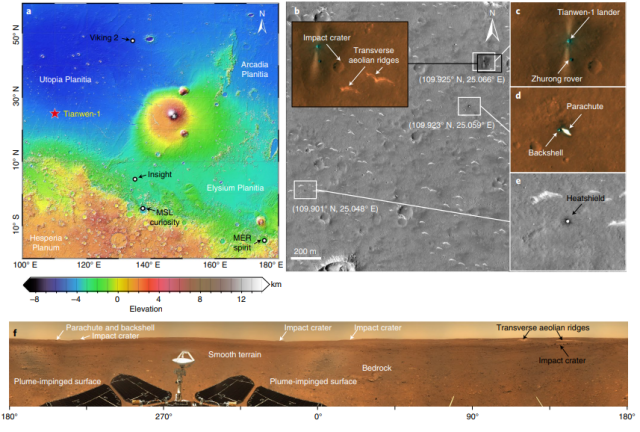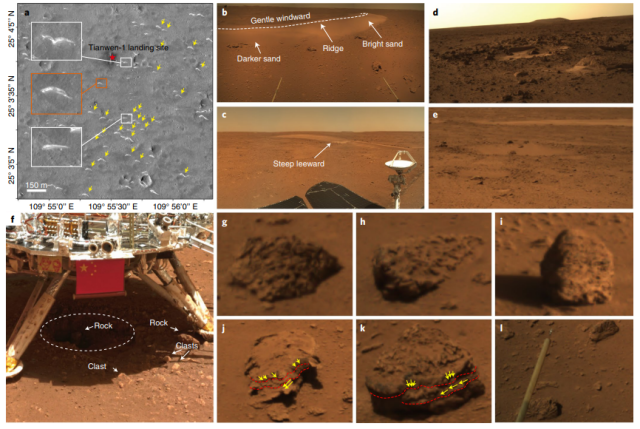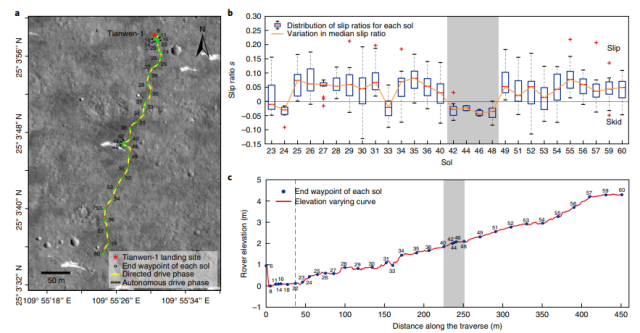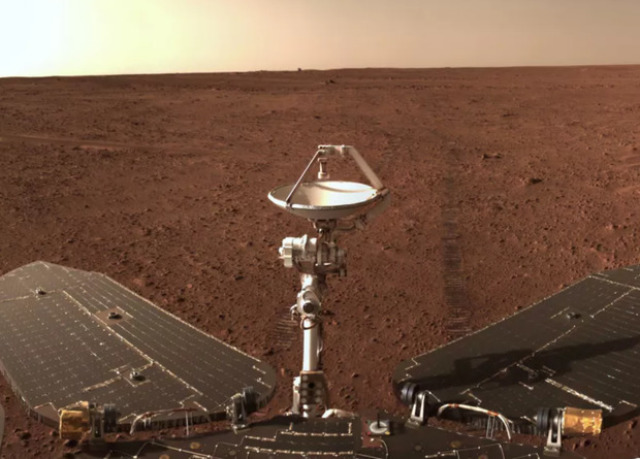The team of the first Chinese rover "Zhuzhong" has published the results of the analysis of data collected during the first 60 sols of its work on the Utopia Plain. It turned out that the soil at the landing site is much more durable than lunar regolith, and also quite sticky. In addition, scientists have determined that the terrain in the landing area is formed due to the physical and chemical weathering of rocks, including with the participation of water. The article was published in the journal Nature Geoscience.
Zhuzhong was delivered to the Utopia Plain on Mars in May last year as part of the Tianwen-1 mission, which also includes a repeater orbiter and a landing platform. The six-wheeled rover is equipped with solar panels, cameras, ground-penetrating radar, a spectrometer for the study of minerals and weather sensors. He has already completed the basic scientific program, designed for 90 sols (Martian day), and moved on to the extended one, having traveled more than 1.5 thousand meters on Mars during this time.
A group of planetary scientists led by Liang Ding from Harbin Polytechnic University published preliminary results of the analysis of scientific data on the structure of the surface in the area of the landing of the rover for the first 60 sols of the joint work of Zhuzhong and the Tianwen-1 orbiter. During this time, the rover drove 450,9 meters.

a) A topographic map of the rover's landing area; b, c, d, e) The landing area and braking system elements according to the orbiters; f) The rover's landing area from its point of view.
Image source: L. Ding et al. / Nature Geoscience, 2022

Geological features of the Zhuzhong landing site. a) Distribution and characteristics of Aeolian ridges around the landing site; b, c) Images of the transverse Aeolian ridge; d) A small crater surrounded by dark rocks with sand deposits at the bottom, e) a heavily eroded crater; f) A mini-crater (0.95 meters in diameter) directly under the lander; g-i) Rocky outcrops with a diverse structure.
Image source: L. Ding et al. / Nature Geoscience, 2022
The landing site is located in the lowlands, approximately 3.32-3.36 billion years old, which corresponds to the Late Hesperian period. There are hundreds of overlapping small craters, folded ridges and narrow grabens in the region, and there are also Aeolian ridges, which are mainly transverse Aeolian ridges pointing to the north-easterly direction of local winds. There are few large boulders on the surface of the area, small pebbles are observed, and the bedrock is half-covered with sand. The morphology of rocks and craters in the images taken by Zhuzhong indicates both the processes of physical weathering (impact spraying when meteorites fall, erosion due to wind and sand and weathering during freezing-thawing of rocks) and the possible interaction of rocks with water and salts dissolved in it, which led to chemical weathering.

The rover's route and the associated wheel slippage during the first 60 sols.
Image source: L. Ding et al. / Nature Geoscience, 2022
Scientists were also able to evaluate the mechanical properties of the soil at the landing site of the rover. It demonstrates high load- bearing capacity and traction with wheels, which are higher than in the case of lunar regolith at the landing site of the lunar rover "Yutu-2". The equivalent stiffness of the soil is estimated in the range from 1390 to 5872 kilopascals per meter, and the angle of internal friction is from 21 to 34 degrees with coupling from 1.5 to 6 kilopascals. The high adhesion of the soil leads to its sticking to the wheels of the rover, while the angle of internal friction is less than in the case of the landing sites of the Viking-2, InSight, Phoenix and Mars Pathfinder missions.
We talked in detail about how the first Mars mission of China is arranged in the material "Questions to the sky" .
Alexander Voityuk

